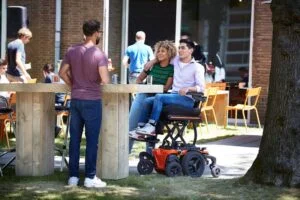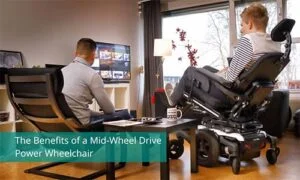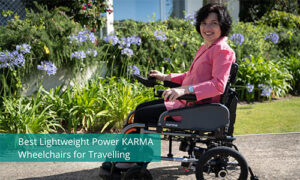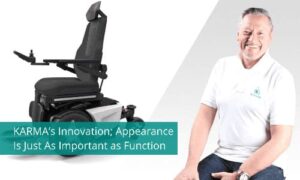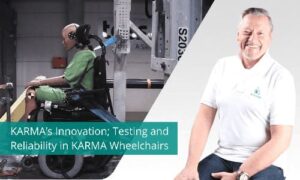When choosing power wheelchair driving, it is imperative that the controller interface should match the cognitive abilities of the user. The user shouldn’t have to adapt to the requirements of the controller.
What to consider when choosing power wheelchair driving controls?
When a therapist is assessing the user for a power wheelchair controller they will look for the users:
Motor Control
Motor control determines how well users can activate and coordinate their muscles and limbs to carry out a motor skill or a precise movement to perform a specific movement.
Range of Motion (ROM)
A therapist will also assess a user’s fine motor skills which are smaller, exact movements (the kind needed to operate a joystick), unlike gross motor skills which are used for larger actions such as waving. Fine motor skills require awareness, planning, coordination, muscle strength, and “normal” sensation.
Strength
Some disabilities come with a level of spasticity that damages the nerves in the body. The muscles can become stiff, waste away (atrophy), or get muscle fibrosis. This may result in the user not having a lot of strength to operate a wheelchair control. The damage to the muscle will then lead to the user experiencing a limited range of motion.
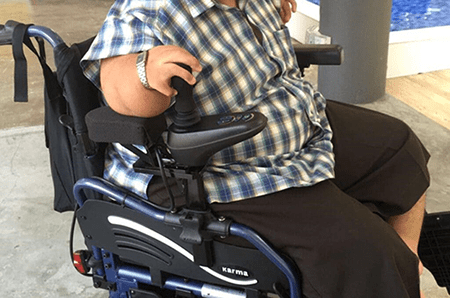
An example of a limited range of motion is one of our users, Mohamed, who is using KP-25.2. Originally the joystick was located too far forward and he couldn’t reach it without disrupting his seating position. You can read his full story of the adaptations that were made to Mohamed’s wheelchair on the KARMA website.
Endurance
The user’s endurance should also be taken into account when choosing a power wheelchair controller for the user. Will they sustain fatigue from having to carry out the same action over and over?
There is a wide range of controls available for power wheelchair user’s to accommodate all of the above. In this blog, we will cover the 3 basic power wheelchair controls; Proportional Control, Digital Control, and Attendant Control.
The 3 basic power wheelchair controls
Proportional Control (e.g. standard joystick)
The joystick is the standard driving control found on power wheelchairs. Joystick controls offer full directional ( 360°) control and speed control. There is also a range of handles available to accommodate the user:
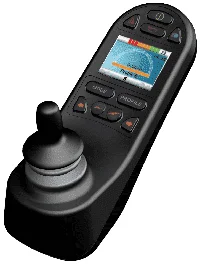
- A round handle is available for users with reduced muscle tone in the hand.
- The T-Shaped handle is for users with forearm pronation.
- The U-Shaped handle is for users who don’t have a good hand grip but have good shoulder and elbow control.
The placement of the joystick can also be adapted to suit the user, literally, it can be placed anywhere between their head and their toes! A midline control is available for users who have muscle weakness or shorter arms and cannot reach the standard joystick location.
The joystick can also be programmed to meet the needs of the user. The speed, acceleration, and deceleration can all be personalized.
Digital Control (non-proportional)
These controls are designed for users who lack the fine motor skills to operate a standard joystick. The wheelchair manufacturer can customize what each switch or control does. The only downside is that there is only one speed available.
Non-proportional controls can also be added for those user’s also using a joystick. The buttons and switches can be used to operate the seat functions to ensure that the user has consistent access to the controls.
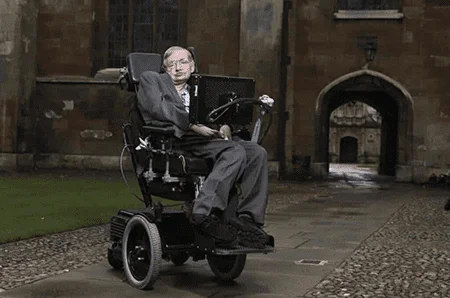
A great example of a wheelchair user who had a wheelchair adapted to his (lack of) fine motor skills is Stephen Hawking. Hawking used just one switch to control all of the functions on his tablet and an IR sensor in his glasses that detected his cheek muscle movements. Source: How Stephen Hawking’s wheelchair works
Attendant Control
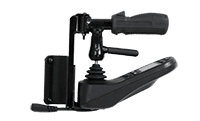
Another type of control available for wheelchair users is the attendant control. This control gives the caregiver the ability to control the wheelchair without needing to push it. This option is great if the caregiver is elderly.
Summary
In conclusion, there is a solution for every user who needs a power wheelchair. Whether it is for an elderly user who needs a power wheelchair to go shopping, an office worker who needs to travel around the city, or someone in rehabilitation with a spinal cord injury who needs the chair to do most of the work. Controls can be adjusted to make it usable for each wheelchair user.
Contact your local KARMA dealer to find out the best wheelchair controller for your needs. No matter what their motor function level, we will always do our best to cater to each user in order to improve their quality of life.
Keep Reading

 Global
Global